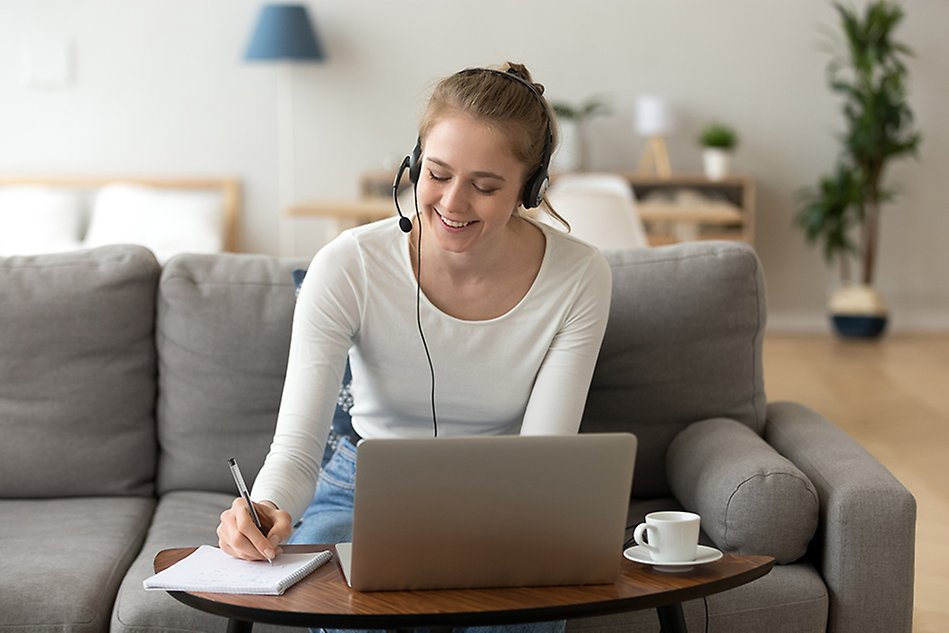Distance learning – tips and tricks
With distance learning it can be hard to maintain good routines. They are important for creating good conditions for you to succeed in your studies. Here are some tips on how to make your distance education work well.

Learn the digital tools
You need to have access to a computer
Your most important tool is a computer, PC or Mac does not matter. The learning platform Blackboard works best on a computer and you cannot fully conduct your studies by using only your phone or tablet. Some functions are not available in the Blackboard app.
Search for instructions online
Take some time to learn the digital tools being used in the education. It's easier to feel comfortable with and be inspired by the teaching if you feel that you know the tools. Many tools have good instructions on their websites or on Youtube that you can use.
For instance, Halmstad University uses the software Zoom for digital meetings, online teaching and digital seminars. Via Blackboard you can easily log in to Zoom, you will find the link under 'Student services'.
Things to think about in digital meetings
If you're using a web cam, it might be a good idea to choose a background that isn't distracting for those who see you. Try to find a neutral and plain background, which creates good conditions for focusing on your studies. Having a messy sink, people walking past in the background or things that are too personal is not optimal.
Report technical issues
If there are problems with any of the digital tools you're using in your distance learning, you can report this to the IT support via Helpdesk.
Create good habits
By planning your day and making a weekly plan, you can create good conditions for having good study routines. You can for example show others how and when you're available on the phone or via email etc., so they know when you can be reached for studies and not. Try to take your lunch and coffee breaks as usual – preferably together with your classmates, even though you are in different locations.
Set up a physical study place
Try to set up a place to study that isn't the same as where you spend the rest of your day. You might want to go to the library or another public place. You can also set up a physical place at home that's allocated to studying. It could be a specific room or, if you have a small apartment, a special place or chair where you study.
If possible, avoid distractions when you study. If you have the option of turning off notifications on your phone and computer, that's a good idea. Also avoid having the TV on or anything else that might distract you and take focus away from studying.
7 tips for efficient distance studies
1. Set at goal
Example: Write two pages for the home exam.
2. Divide the work
Example: Find 3 relevant articles, read an article and summarise the article.
3. Remove distractions
Take away anything that might take away your focus, for example your phone.
4. Set a timer
Set the alarm for 25 minutes.
5. Go!
Focus for 25 minutes straight.
6. Celebrate
Mark the goal you have managed to reach during the 25 minutes and celebrate!
7. Move around
Take a 5 minute break and move around for a bit. Change rooms. Start again.
Study together
Regardless of whether you meet your classmates physically or digitally, you benefit from studying together. There are many digital tools you can use. Find the one that works best for you.
Stay in touch
When you're only studying remotely it can easily feel a bit empty and lonely. Agree on how to keep contact with each other and how to continue your regular meetings, coffee and lunch breaks, even though they are now done remotely. Checking in with someone regularly and having someone waiting for you digitally makes it harder to 'cheat' with your study hours. It also makes distance learning a bit more fun and easier to handle.

